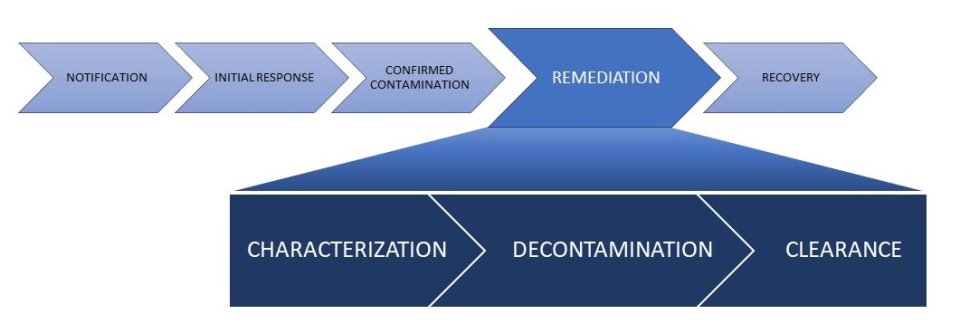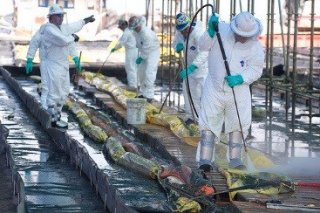Decontamination for Drinking Water and Wastewater Utilities
Contamination of a drinking water or wastewater utility can occur at any time by a chemical, biological (including toxins), or radiological (CBR) agent through an accidental or intentional action or a natural disaster. Remediation begins after the initial threat has been evaluated, is found to be credible, and a contamination incident is confirmed. The process of remediation can be described in three phases: Characterization, Decontamination, and Clearance. However, this process is not strictly linear and will likely occur simultaneously with other efforts. Incident and utility-specific constraints will guide the decision-making process for each unique contamination event. For all contamination incidents, a quick and effective response is always desired to protect life, public health, and the environment and to restore full utility services as soon as possible.
Remediation Flow of Activities:

EPA has a variety of tools and resources to support utilities through remediation in response to all-hazards water contamination.
Learn more about Remediation Activities for Utilities

- Basics of water remediation
- Documents to guide remediation
- Water Contamination Incident Remediation Plan (WaterCIRP)
- Sampling methods and decontamination technologies
- Water decontamination Frequently Asked Questions (FAQs) for customers
- Sign Up for our Decontamination for Drinking Water and Wastewater Utilities (Decon) Email List
